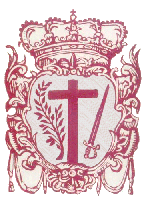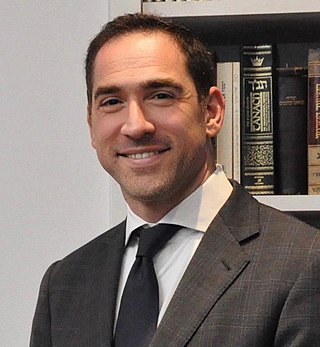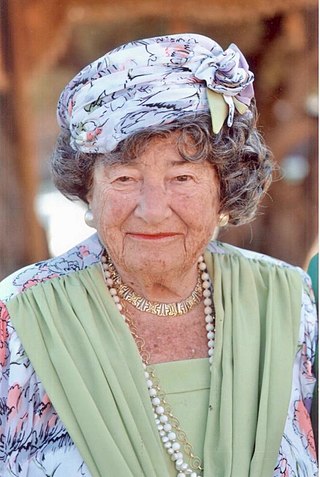
Uriel da Costa was a Portuguese philosopher who was born a New Christian but returned to Judaism and ended up questioning the Catholic and rabbinic traditions of his time. This led him into conflict with both Christian and rabbinic institutions and caused his books to be included in the Index Librorum Prohibitorum, the List of Prohibited Books by the Catholic Church.

SephardicJews, also known as Sephardi Jews or Sephardim, and rarely as Iberian Peninsular Jews, are a Jewish diaspora population associated with the Iberian Peninsula. The term, which is derived from the Hebrew Sepharad, can also refer to the Jews of the Middle East and North Africa, who were also heavily influenced by Sephardic law and customs. Many Iberian Jewish exiled families also later sought refuge in those Jewish communities, resulting in ethnic and cultural integration with those communities over the span of many centuries.

António Vieira was a Portuguese Jesuit priest, diplomat, orator, preacher, philosopher, writer, and member of the Royal Council to the King of Portugal.

The Portuguese Inquisition, officially known as the General Council of the Holy Office of the Inquisition in Portugal, was formally established in Portugal in 1536 at the request of its king, John III. Although Manuel I had asked for the installation of the Inquisition in 1515 to fulfill the commitment of his marriage with Maria of Aragon, it was only after his death that Pope Paul III acquiesced. In the period after the Medieval Inquisition, it was one of three different manifestations of the wider Christian Inquisition, along with the Spanish Inquisition and Roman Inquisition. The Goa Inquisition was an extension of the Portuguese Inquisition in colonial-era Portuguese India.
Spanish and Portuguese Jews, also called Western Sephardim, Iberian Jews, or Peninsular Jews, are a distinctive sub-group of Sephardic Jews who are largely descended from Jews who lived as New Christians in the Iberian Peninsula during the few centuries following the forced expulsion of unconverted Jews from Spain in 1492 and from Portugal in 1497. They should therefore be distinguished both from the descendants of those expelled in 1492 and from the present-day Jewish communities of Spain and Portugal.

The history of the Jews in the Netherlands largely dates to the late 16th century and 17th century, when Sephardic Jews from Portugal and Spain began to settle in Amsterdam and a few other Dutch cities, because the Netherlands was an unusual center of religious tolerance. Since Portuguese Jews had not lived under rabbinic authority for decades, the first generation of those embracing their ancestral religion had to be formally instructed in Jewish belief and practice. This contrasts with Ashkenazi Jews from central Europe, who, although persecuted, lived in organized communities. Seventeenth-century Amsterdam was referred to as the "Dutch Jerusalem" for its importance as a center of Jewish life. In the mid 17th century, Ashkenazi Jews from central and eastern Europe migrated. Both groups migrated for reasons of religious liberty, to escape persecution, now able to live openly as Jews in separate organized, autonomous Jewish communities under rabbinic authority. They were also drawn by the economic opportunities in the Netherlands, a major hub in world trade.

Balthazar (Isaac) Orobio de Castro, was a Portuguese Jewish philosopher, physician and religious apologist.

The history of the Jews in Portugal reaches back over two thousand years and is directly related to Sephardi history, a Jewish ethnic division that represents communities that originated in the Iberian Peninsula. In the sixteenth and seventeenth centuries, Portuguese Jews emigrated to a number of European cities outside Portugal, where they established new Portuguese Jewish communities, including in Hamburg, Antwerp, and the Netherlands,<Swetschinski, Daniel M. Reluctant Cosmopolitans: The Portuguese Jews of Seventeenth-Century Amsterdam. London: Littman Library of Jewish Civilization 2000</ref> which remained connected culturally and economically, in an international commercial network during the seventeenth and eighteenth centuries.

The community of Sephardic Jews in the Netherlands, particularly in Amsterdam, was of major importance in the seventeenth century. The Portuguese Jews in the Netherlands did not refer to themselves as "Sephardim", but rather as "Hebrews of the Portuguese Nation." The Portuguese-speaking community grew from conversos, Jews forced to convert to Catholicism in Spain and Portugal, who rejudaized under rabbinic authority, to create an openly self-identified Portuguese Jewish community. As a result of the expulsions from Spain in 1492 and Portugal in 1496, as well as the religious persecution by the Inquisition that followed, many Spanish and Portuguese Jews left the Iberian peninsula at the end of the 15th century and throughout the 16th century, in search of religious freedom. Some migrated to the newly independent Dutch provinces which allowed Jews to become residents. Many Jews who left for the Dutch provinces were crypto-Jews, but continued to practice Judaism in secret. Others had been sincere New Christians, who, despite their conversion, were targeted by Old Christians as suspect. Some of these sought to return to the religion of their ancestors. Ashkenazi Jews began migrating to the Netherlands in the mid seventeenth century, but Portuguese Jews viewed them with ambivalence.

Isaac Aboab da Fonseca was a rabbi, scholar, kabbalist, and religious writer. In 1656, he was one of several elders within the Portuguese-Jewish community in Amsterdam and for a time in Dutch Brazil before the Portuguese reconquest. He was one of the religious leaders who excommunicated philosopher Baruch Spinoza in 1656.

Saul Levi Morteira or Mortera was born in Venice, so he was neither a Sephardi or Ashkenazi Jew. He became a prominent figure in the formation of the Portuguese Jewish community in early seventeenth-century Amsterdam and his polemical writings against Catholicism had wide circulation.

David de Aaron de Sola or David Aaron de Sola (1796–1860) was a rabbi and author, born in Amsterdam, the son of Aaron de Sola.

The Portuguese Synagogue, also known as the Esnoga, or Snoge, is a late 17th-century Sephardic synagogue in Amsterdam, completed in 1675. Esnoga is the word for synagogue in Judaeo-Spanish, the traditional Judaeo-Spanish language of Sephardi Jews.
Isaac S. D. Sassoon is an Sephardic rabbi (hakham), scholar and educator. Hakham Sassoon, who is currently one of the leading scholars in the Sephardic world, was born into the Sassoon family of London and grew up speaking Judeo-Arabic.
Pinchas Toledano is Hakham-Emeritus of Amsterdam and of the Spanish and Portuguese Jews of the Netherlands. He was also the official Av Beit Din, head of the court, of the Netherlands Beit Din.

Joseph Dweck is the senior rabbi of the S&P Sephardi Community of the United Kingdom.
Eastern Sephardim are a distinctive sub-group of Sephardic Jews mostly descended from Jewish families which were exiled from Iberia in the 15th century, following the Alhambra Decree of 1492 in Spain and a similar decree in Portugal five years later. This branch of descendants of Iberian Jews settled across the Eastern Mediterranean.

Juda Lion Palache was a professor of Semitic languages at the University of Amsterdam and a leader of the Portuguese Jewish community in that city. He came from the Pallache family.
Don David Curiel, alias Lopo da Fonseca Ramires, was a Sephardi Jewish merchant.

Els Salomon-Prins Bendheim was a Dutch-born Orthodox Jewish philanthropist, theologian, author and photographer. In 2002, Bendheim was awarded the Yakir Yerushalayim prize for her contributions to the development of Jewish institutions in Jerusalem.













